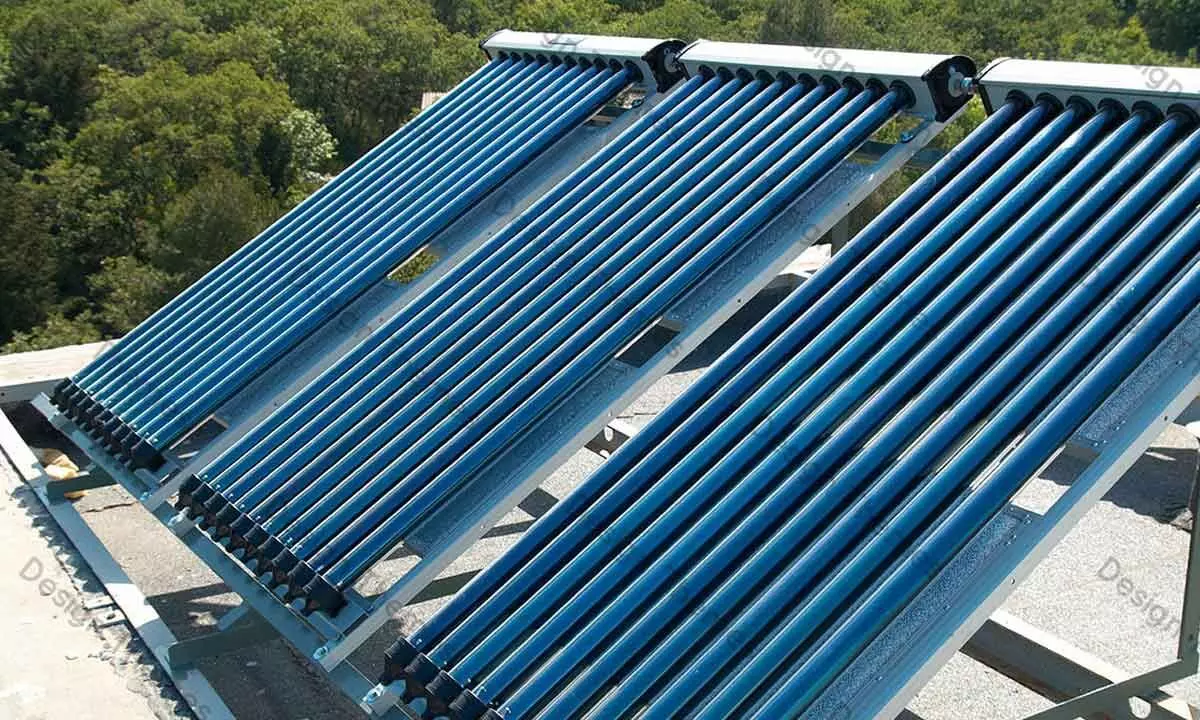Solar steam cooking helps prune power bills, LPG costs

Solar thermal steam turbines-based electricity generation is being used in Tirupati, Srisailam and in Kia Motors in Penukonda as a cost-effective method for mass cooking and larger kitchens, according to NREDCAP district manager Kodandaram Murthy.
Anantapur: Solar thermal steam turbines-based electricity generation is being used in Tirupati, Srisailam and in Kia Motors in Penukonda as a cost-effective method for mass cooking and larger kitchens, according to NREDCAP district manager Kodandaram Murthy.
Talking to The Hans India, Kodandaram Murthy said a 50 mw Solar steam turbine had been set up to supply steam-based energy in Pamidi. This is a cost-effective energy used for major operations.
Kia Motors is producing 2 mw of power to save its conventional thermal power bills. TTD is using the steam-based power to cook 60,000 meals a day. 100 kg of rice can be cooked in 15 minutes. Srisailam temple authorities are using the steam-based power as an alternative to even LPG fuel. Prashanthi Nilayam in Puttaparthi also is using steam power to cook for thousands of devotees and residents in no time.
Most solar cookers have some sort of reflectors to concentrate the energy of the sun. The solar steamer uses no reflectors but concentrates the solar energy by creating steam from a relatively large collector area and applying it to a smaller cooking area. As the solar steamer is using steam as heat transfer medium, it is an indirect cooking system. This allows the design of a split system where the thermal solar collector can be placed at some distance (e.g. on the roof) apart from the place of cooking (e.g. in the kitchen). The cook is not exposed to the sunshine and can use the steam at whatever height is convenient and culturally acceptable. This makes it a very convenient cooker for large quantities of food. Using simple stackable steaming pots several dishes can be cooked simultaneously. The steaming process is very similar to traditional steaming processes and should find easily cultural acceptance.
The solar generated steam can also be used to heat large pots of stew or soup by guiding the steam directly into the liquid where it condenses and releases the heat of condensation. This leads to a gentle agitation of the food without burning it.
In its technical design the solar steamer makes use of the availability of standard evacuated tube solar collectors which are available from China at low cost. Solar thermal power plants use the sun’s rays to heat a fluid to high temperatures. The fluid is then circulated through pipes so that it can transfer its heat to water and produce steam. The steam is converted into mechanical energy in a turbine which is then converted into electricity by a conventional generator.



















